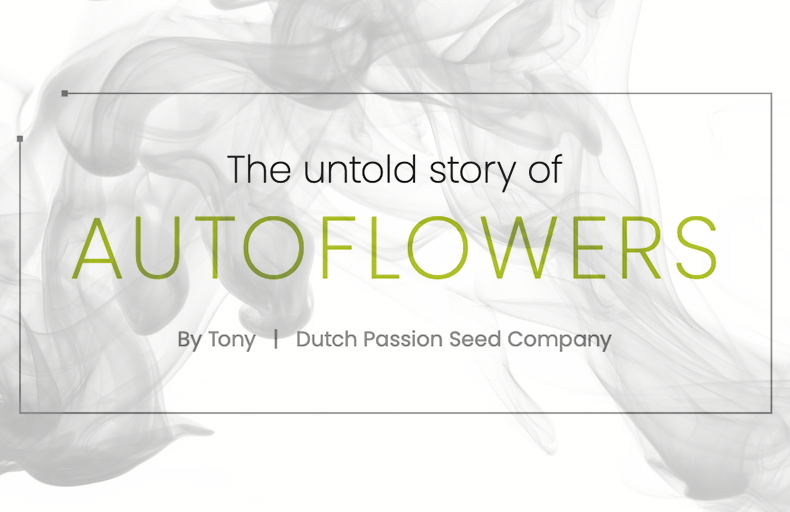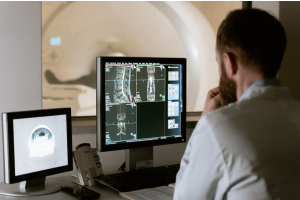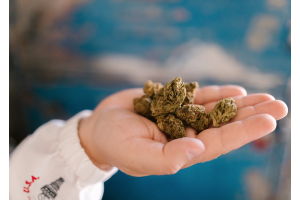The untold story of Autoflowers, By Tony Dutch Passion Seed Company

Today autoflower strains are valued and grown by a huge number of home growers as well as professional, licensed legal growers. Autoflower strains have earned their reputation for fast, easy harvests with quality levels on a par with the best photoperiod strains.
Today, autoflower seeds account for around half of all cannabis seeds sold by the top seed companies. But autoflower strains didn’t always enjoy such a good reputation. The earliest auto varieties were medium-potency and medium-yielding at best. So how did autoflowers make the genetic transition to top-shelf performance?
CANNABIS RUDERALIS, THE MOTHER OF ALL AUTOFLOWERS
Alongside cannabis indica and cannabis sativa are the cannabis ruderalis strains. In its natural state ruderalis has very low THC levels. The main asset of ruderalis is the unusual ability to bloom without daylight hours being reduced to 12/12. By using this ruderalis non-photoperiod dependency feature, it has allowed modern autoflowers to bloom under 20-24 hours of daily light. Of course, some very clever autoflower breeding and genetic control was required to enhance the THC content.
It’s worth adding that many of the early cannabis geneticists were initially sceptical that the limitations of early ruderalis could be overcome. Back in the 1980’s there was excitement and interest in ruderalis. But there were also some serious reservations that the inherently low potency of ruderalis would limit usefulness.
These clips from some seed catalogues at the time shows you the scepticism. I was only due to persistence and innovation from companies like Dutch Passion and the pioneering Joint Doctor that autoflowers ever saw the light of day.
THE “MEXICAN RUDY” EXPERIMENT FROM THE JOINT DOCTOR
Ruderalis cannabis was a curiosity known to many cannabis breeders, though in the early days of the 70’s and 80’s no-one knew quite how to utilise ruderalis/autoflower genetics for the benefit of the growing community. Improving potency whilst maintaining the fast growth cycle (with no photoperiod dependency) was the ultimate goal.
The Joint Doctor is a Canadian breeder who was a college student in the 1970’s. His friend gave him some seeds believed to have been a cross between some Mexican cannabis and Ruderalis. It was named Mexican Rudy and bloomed faster than anything he had seen. Mexican Rudy was the first attempt to improve Ruderalis potency whilst retaining the ability to bloom without a reduction in daylight hours.
However, this was just an initial first generation crossing with little resemblance to the high-performance qualities of modern autoflower seeds. Much work still needed to be done and the Joint Doctor’s early breeding efforts would soon see contributions from a large and committed partner.
DUTCH PASSION X THE JOINT DOCTOR COLLABORATION
Dutch Passion have never been strangers to controversial cannabis breeding challenges. In the 1990’s Dutch Passion were the first to introduce feminised weed seeds, despite many saying it was impossible to create them. So, when the Joint Doctor showed the early promise of autoflower seeds Dutch Passion were quick to join forces in the early 2000’s.
The Dutch Passion team knew that getting potency levels on a par with quality photo-dependent strains would be a key challenge if autoflower seeds were ever to make a serious contribution to the cannabis community. But the combination of Dutch Passion’s genetic expertise and experience alongside The Joint Doctor and his innovative early autoflowers would prove to be a recipe for success.
FIRST GENERATION OF FEMINISED AUTOFLOWER CANNABIS SEEDS
The first generation feminised autoflower seeds showed a remarkable feature. They could grow from seed to harvest under 20 hours of daily light in around 10-11 weeks. The future potential was there for all to see. Outdoor growers, even with the shortest of outdoor grow seasons, would now be able to get fast, easy outdoor harvests. Indoor growers could look forward to shaving several weeks off their grow cycles, meaning home growing would get even simpler and faster.
The first auto strains from Dutch Passion were Auto Mazar and Think Different. Early adopters of auto seeds were impressed with the speed and simplicity. Yields also looked surprisingly good. But potency wasn’t quite yet on a par with the best photoperiod strains. Over the following few years some genetic fine tuning and some clever proprietary breeding techniques allowed autoflower seeds to eventually reach parity with the best photoperiod strains.
THE MODERN CLASSIC AUTOFLOWERING STRAINS
In the old days cannabis breeders would ask whether the autoflower version of a particular strain would be on the same quality/THC levels as the corresponding photoperiod version. Today, breeders are working hard to ensure that the photoperiod strain versions are meeting the standards delivered by the best autoflowers! Selective breeding and continuous improvement of autoflower breeding and genetics has allowed growers to cultivate modern auto strains without any compromise in terms of quality and yield.
The best seed suppliers routinely monitor terpene profile and total cannabinoid content to ensure that new auto strains are meeting the strictest quality standards. The highest THC level yet seen on an autoflower is 25.9% THC seen on Dutch Passion Auto Cinderella Jack. That’s higher than many (perhaps we could say ‘most’) photoperiod strains can achieve.
Such THC levels are a world away from the medium-potency levels seen on the inconsistent first-generation autos. But it’s not just potency which has increased, yields from the finest modern auto strains are also in a different league to first generation autos.
HEAVY YIELDING MODERN AUTOFLOWERS; A DIFFERENT LEAGUE TO EARLY AUTOS
The ability to bloom under (typically) 20 hours of daily light offers some huge benefits when it comes to autoflower yield. Freed from the shackles of photo dependency, autos can step into overdrive when blooming under near-constant light.
The energy from photosynthesis creates the biomass of resinous buds. By allowing autoflowers the ability to bloom with around double the normal light hours, yield is boosted dramatically. At harvest a well grown auto will often have numerous heavy side blooms surrounding a tall, chunky central bloom.
Many home growers prefer to grow autos during winter months. With grow lights on for virtually the whole day, indoor grow room temperatures are easy to maintain even in cold climates. Outdoor growers often have a few autoflower strains growing alongside their photoperiod guerrilla strains during the summer. Many home growers as well as legal licensed producers find autoflowers are a fast, convenient, high-quality alternative to growing photoperiod strains.
WHAT DOES THE FUTURE HOLD FOR AUTOFLOWERS?
Autos are now fully established for indoor and outdoor growers. The best auto seed suppliers will tell you that autos are now just as good as traditional photo-dependent strains. But watch out, there are still plenty of low-quality auto seed sellers with hugely inconsistent products.
Some will produce dwarf plants while others will produce plants with low potency levels. A few cannabis cups is often a sign that your seed supplier takes their auto breeding seriously!In the future we will see greater diversification in autoflowering genetics.
As well as autos rich in THC and CBD you can expect to see more autos rich in novel cannabinoids such as Auto CBG-Force which produces plants with up to 15% CBG. You will also see more strains like Auto CBD-Victory which produces plants rich in CBDV.
Medical growers will see some easy and convenient strains rich in novel cannabinoids. Of course, you will see plenty of new THC rich autos too. New Dutch Passion autos like Auto Skywalker Haze deliver consistently high THC levels across all phenotypes. You can also expect autoflower versions of cannabis cup winning strains like Mokum’s Tulip (Auto Mokum’s Tulip) and Kerosene Krash (Auto Kerosene Krash).
Wherever you have a fine quality and appealing photoperiod cannabis strain you can look forward to an auto version of similar (or possibly higher) quality!Autoflower strains have progressed rapidly from a cannabis curiosity to a proven, convenient way of achieving fast high-quality harvests. If you haven’t yet tried growing autos yet you may well be missing out on some of the easiest and highest quality weed you have ever grown.
Written and Published by Tony, Dutch Passion Seed Company in Weed World Magazine issue 152












Validate your login